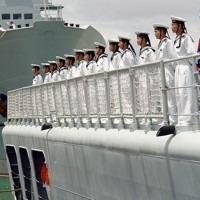With increasing tensions on display in the East and South China Sea, much attention has been given to the growing military capabilities of the People's Republic of China. The attention is understandable: China recently commissioned its first aircraft carrier and is developing anti-ship ballistic missiles dubbed “carrier-killers.”
But while China's military build-up is in many ways being geared toward challenging America, no matter how unlikely a conflict between the two powers might be, an assessment of Chinese power must also gauge the prowess of Chinese forces against other possible challengers, especially the regional armed forces it could face in combat.
History provides a strong argument for understanding Beijing's military modernization in a regional context. Throughout its existence, China has been thought of as a continental power with vast borders to defend. In the mid-1980s, Chinese strategists began to shift away from planning for hostilities with the Soviet Union while gradually considering ideas for modernizing its armed forces. Military planners had just begun to review their options when the Gulf War began and ended with a lightning-quick victory by U.S. forces equipped with new-generation high-tech weaponry. As much of the equipment utilized by Iraq was Soviet-made, similar to China's own, the People’s Liberation Army (PLA) quickly surmised its forces were obsolete in the face of the U.S. military’s "revolution in military affairs." Subsequent Western military operations in Bosnia, Kosovo, Afghanistan and Iraq served as important reference points for China’s military planners. Closer to home, the 1995-1996 Taiwan crisis and the 2001 Hainan Island showdown also played a role in crafting Beijing's strategic calculus.

